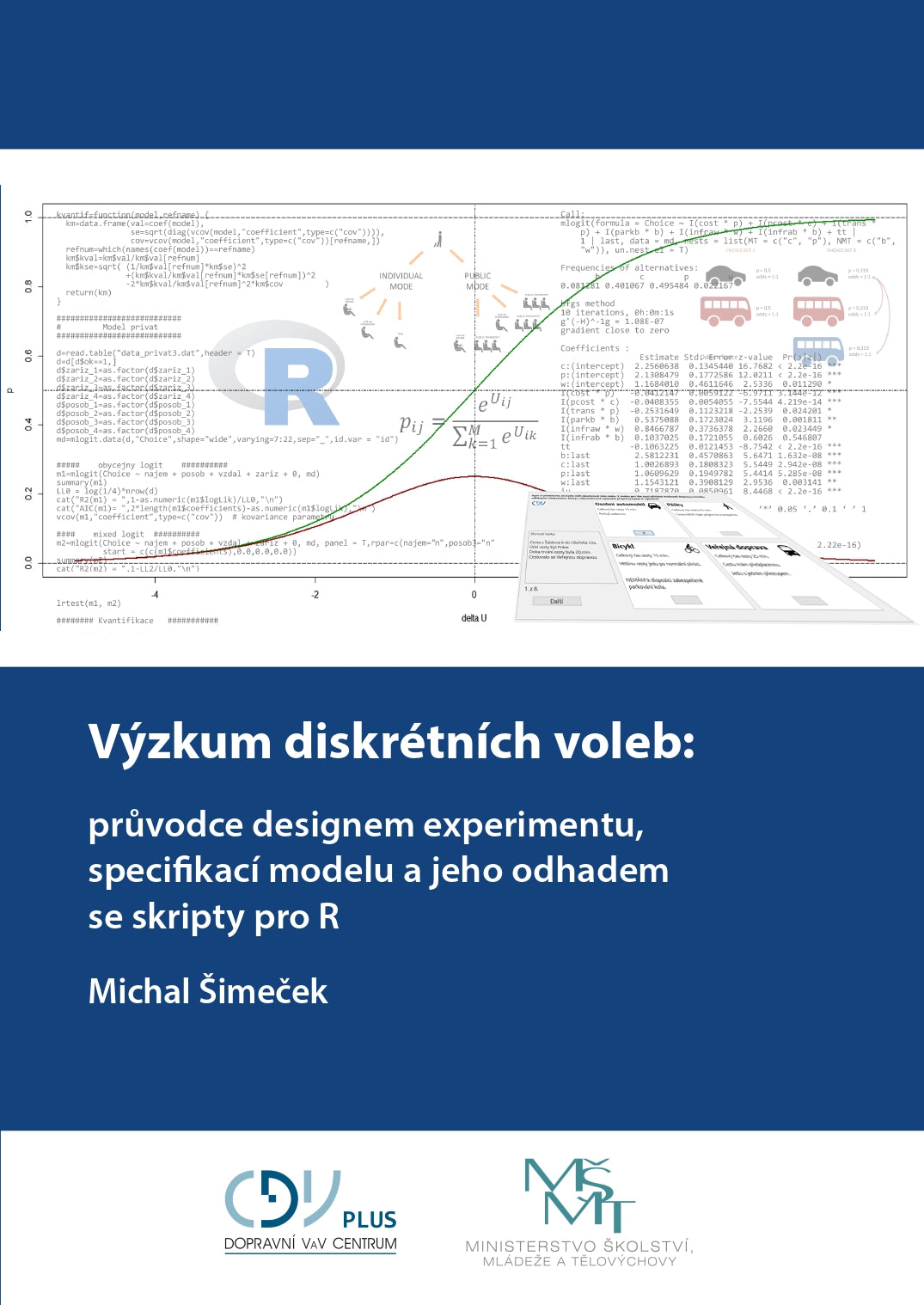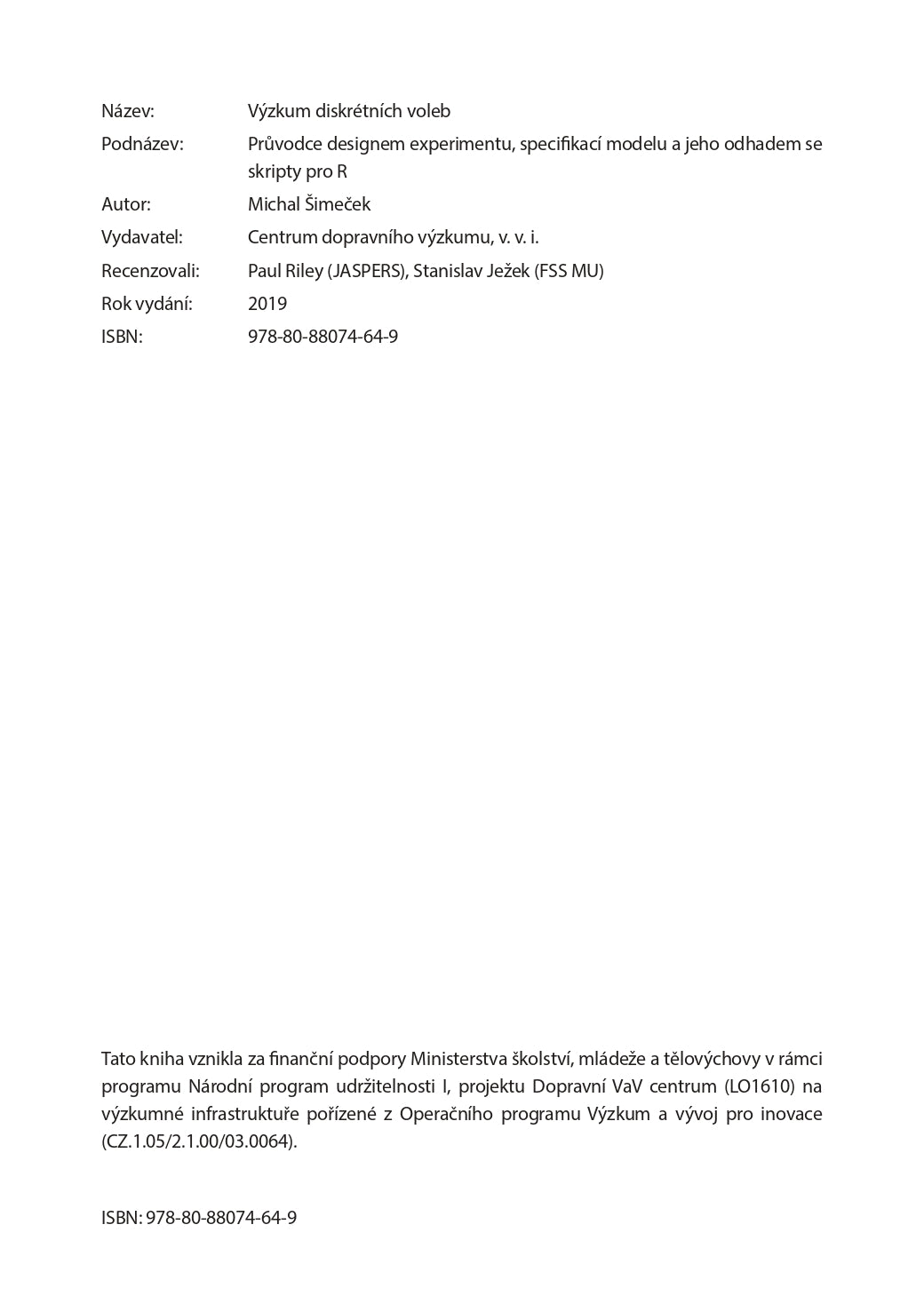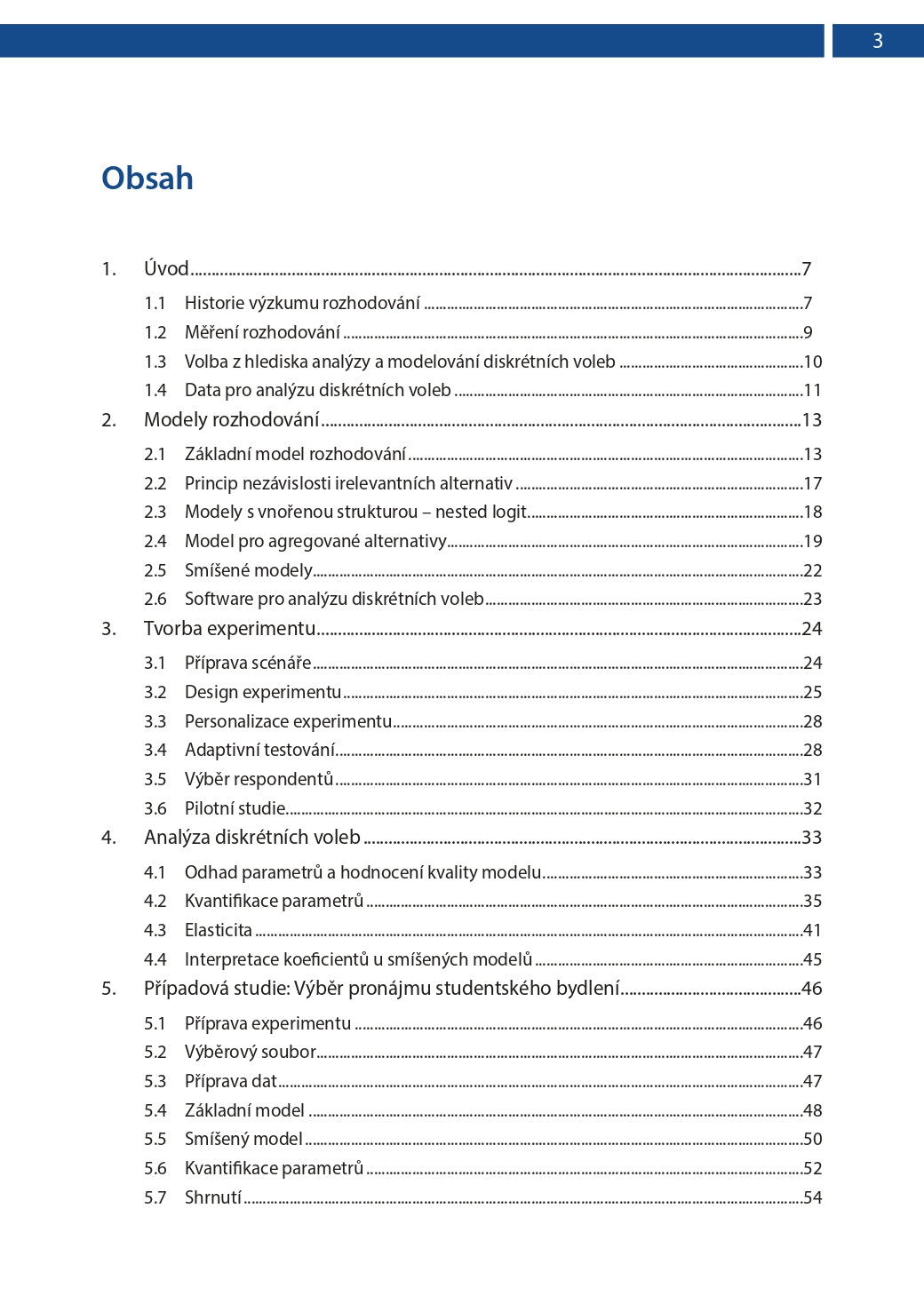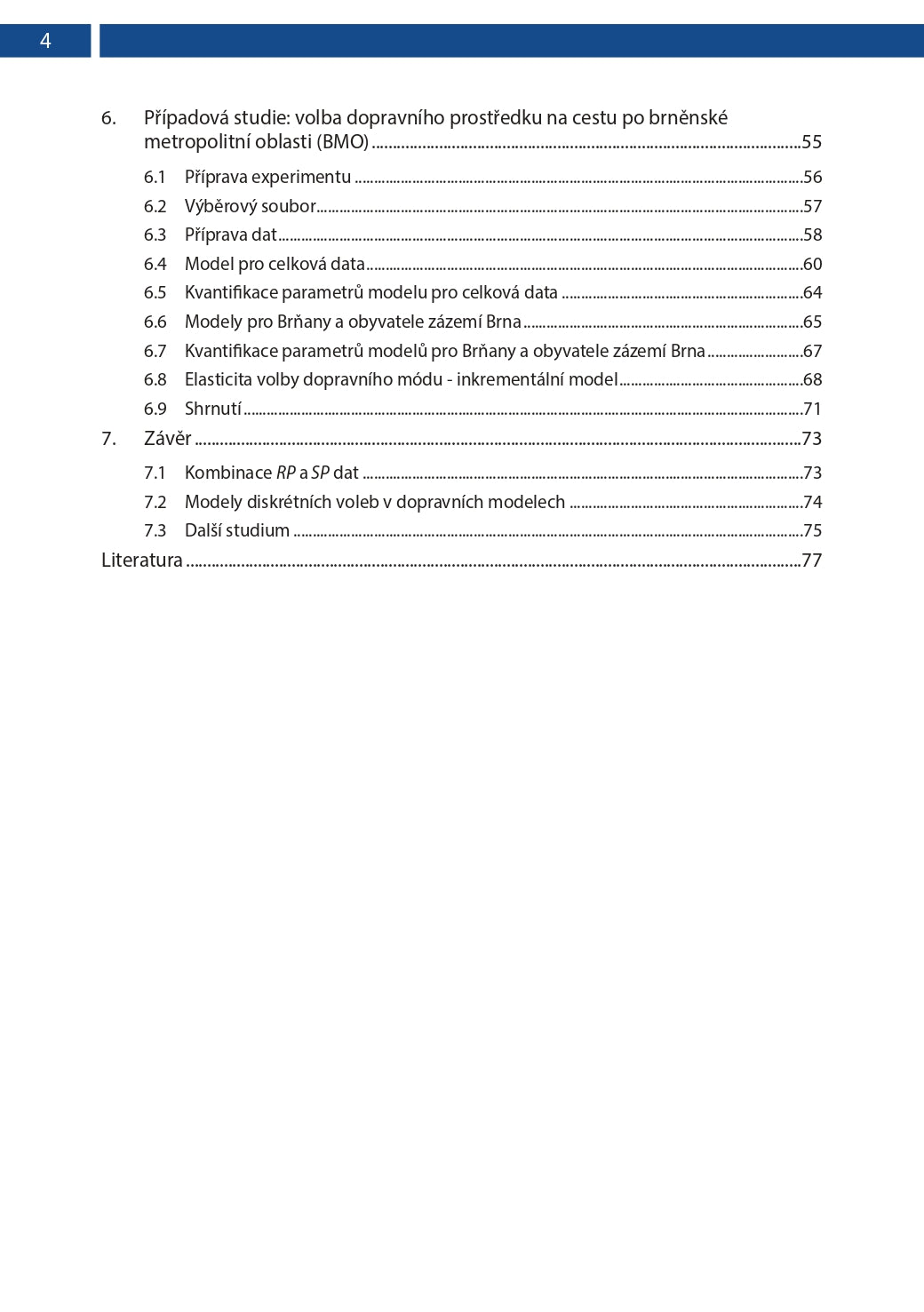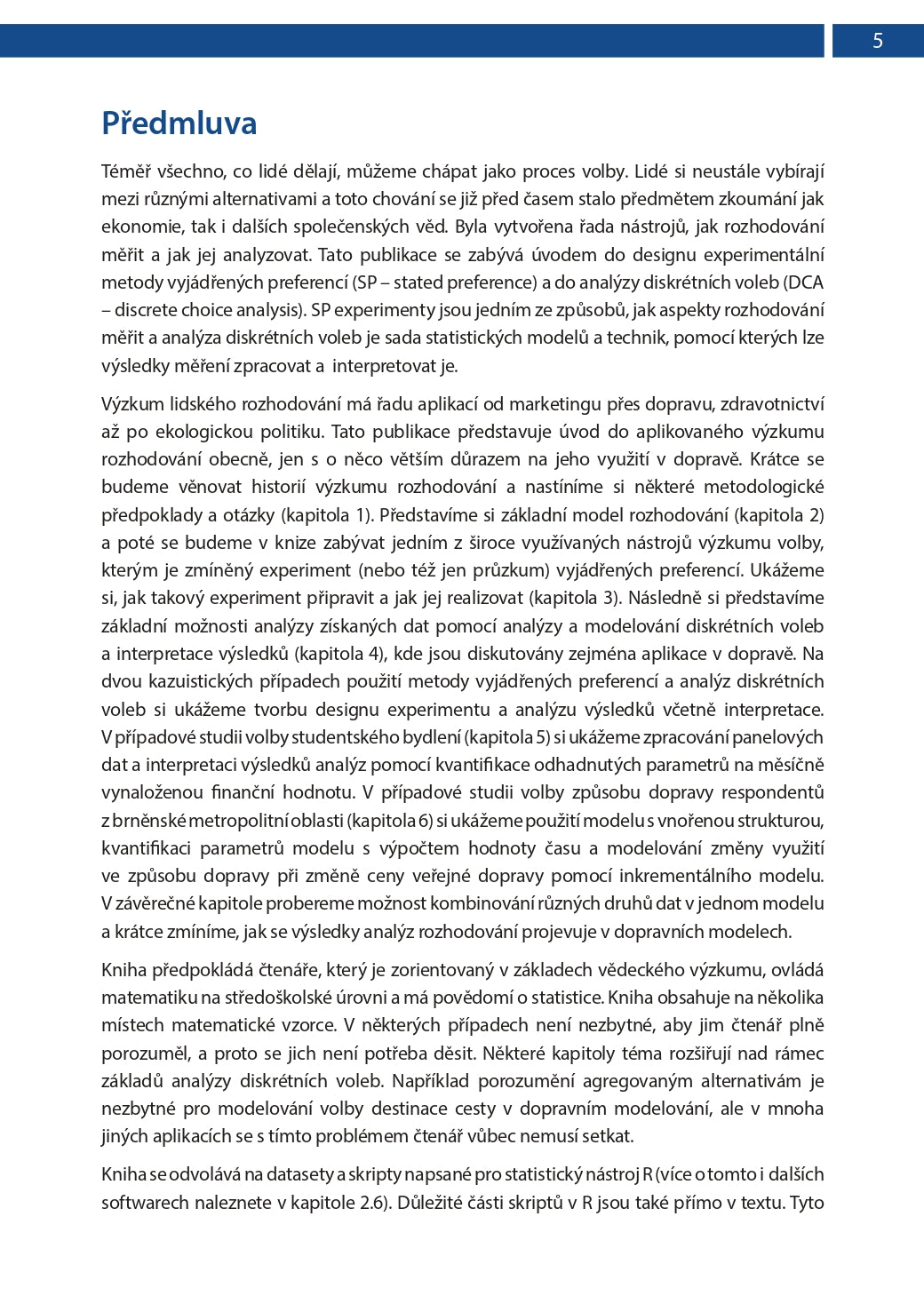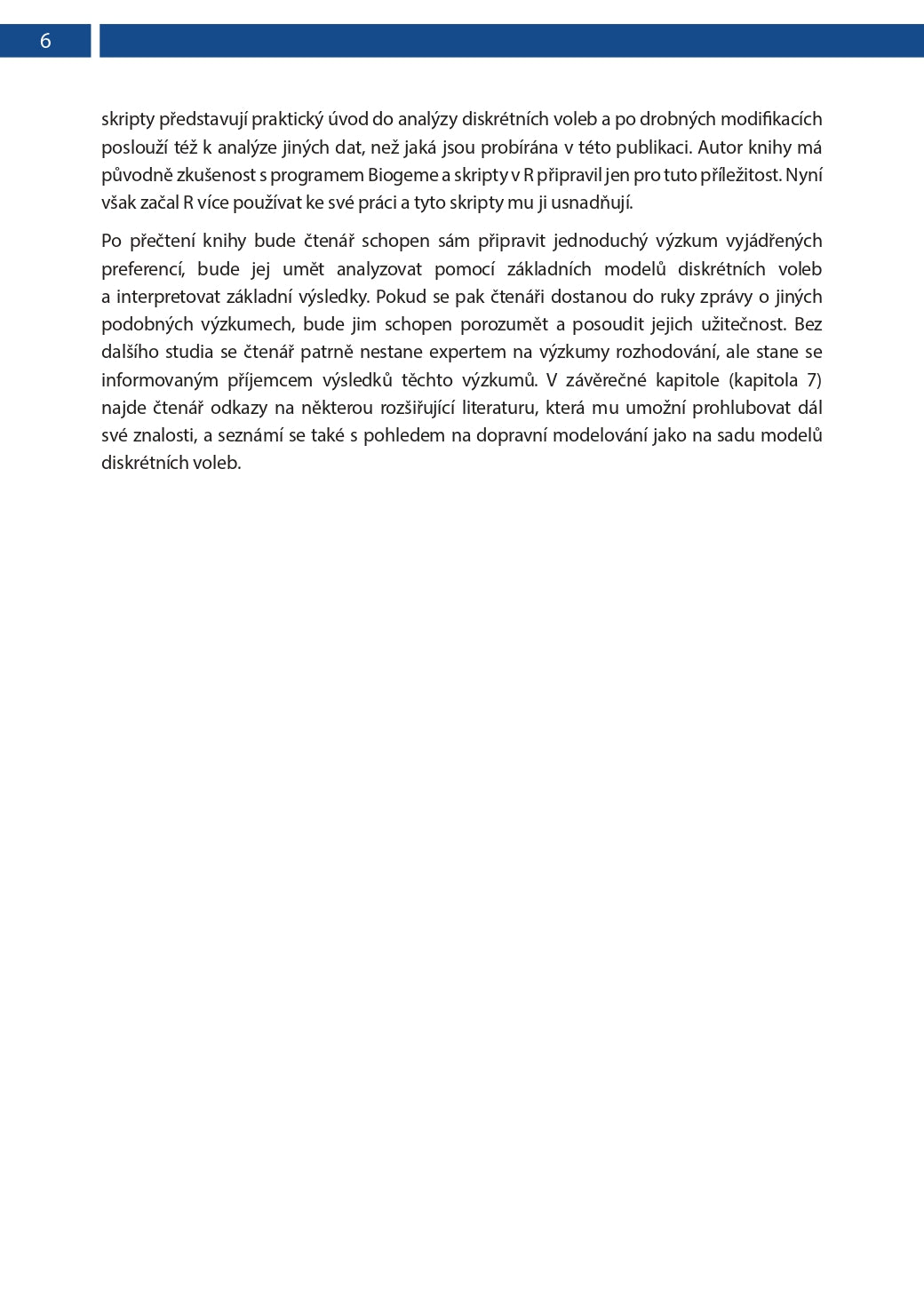E-book
Discrete choice research: a guide to experimental design, model specification, and model estimation with R scripts
Discrete choice research: a guide to experimental design, model specification, and model estimation with R scripts
Couldn't load pickup availability
The publication presents an introduction to applied decision-making research using the experimental method of expressed preferences and discrete choice analysis, focusing in particular on the use of these methods in transport. The introduction briefly discusses the history of decision-making research and some methodological assumptions of this research. It also presents the basic decision-making model, the design of the expressed preference experiment and the subsequent data analysis. It shows the practical use of the expressed preference and discrete choice analysis methods using two examples, shows the creation of the experiment design and the analysis of the results in practice, including the interpretation of the results.
The book works with the author's freely available datasets and with scripts written for the statistical tool R. After reading the book, the reader will be able to prepare a simple survey of expressed preferences, analyze it using basic discrete choice models, and interpret the basic results.

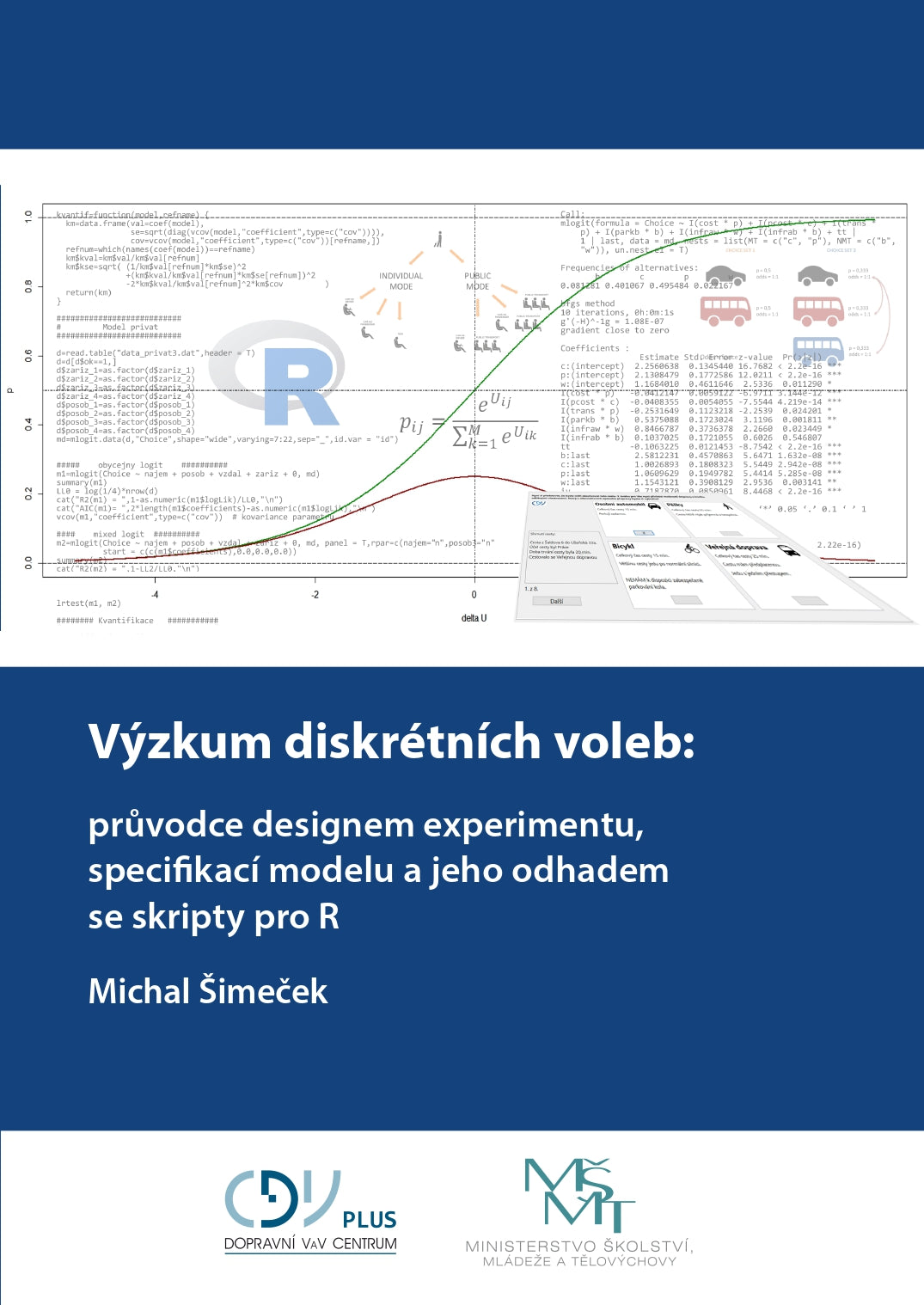
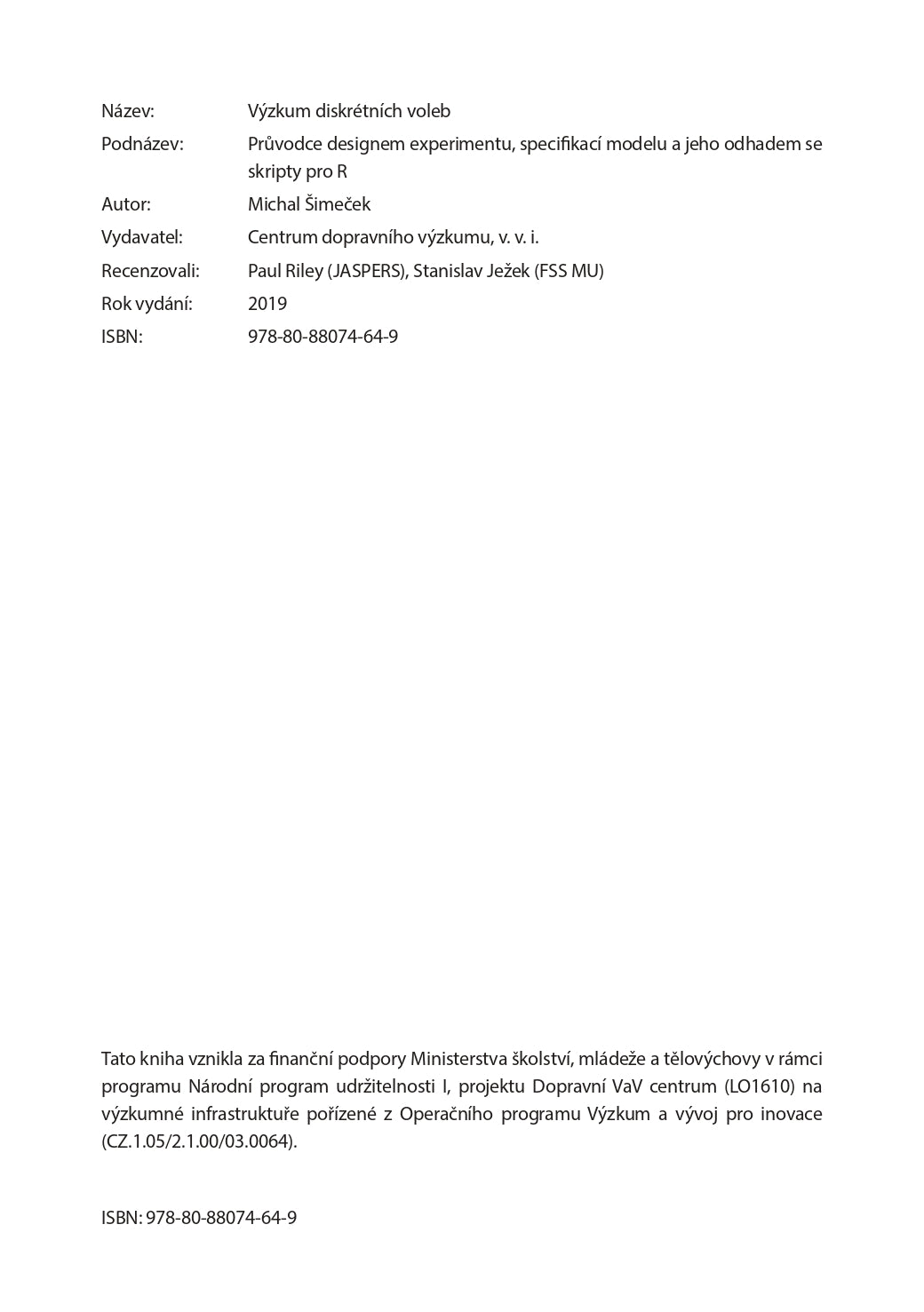
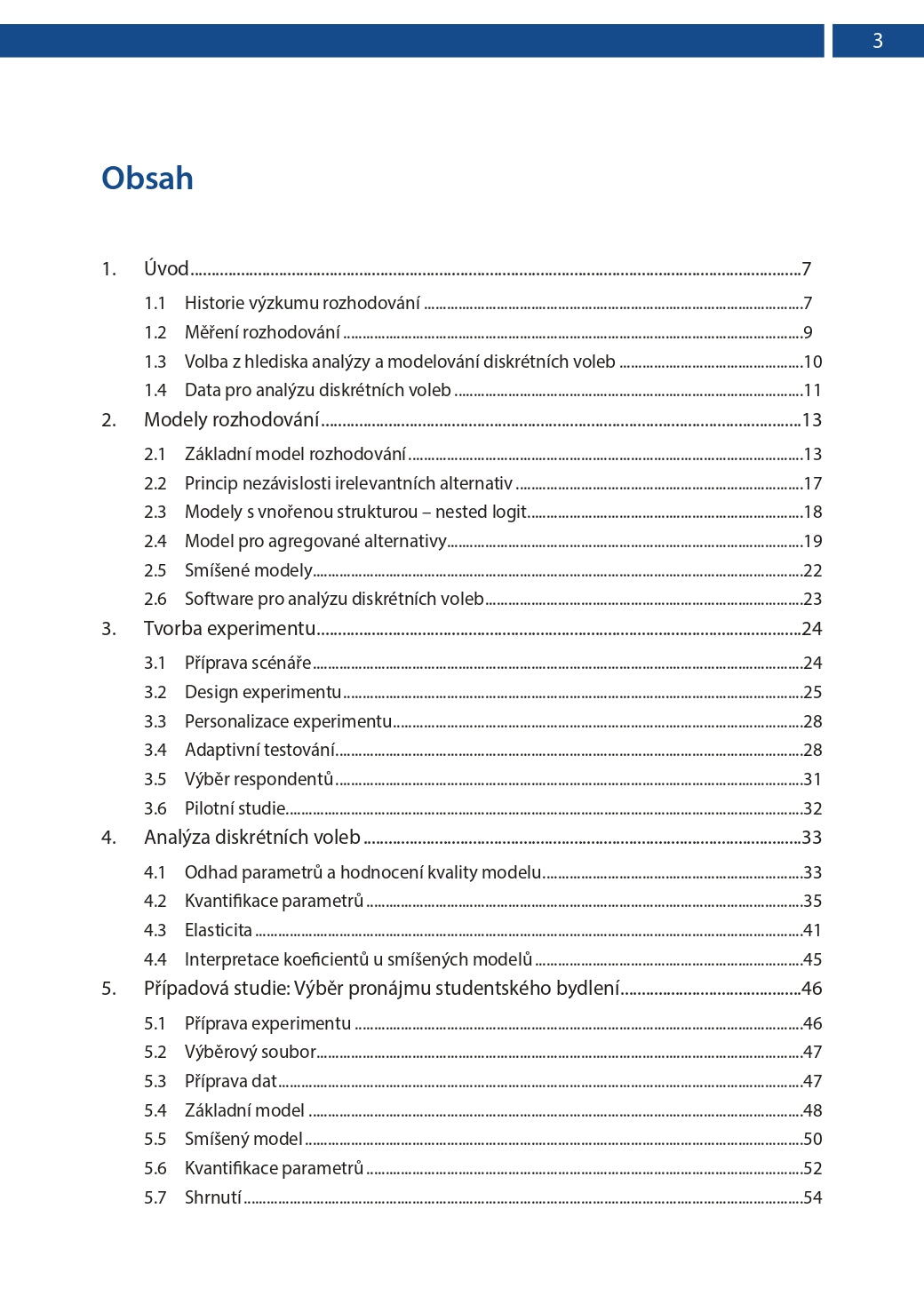
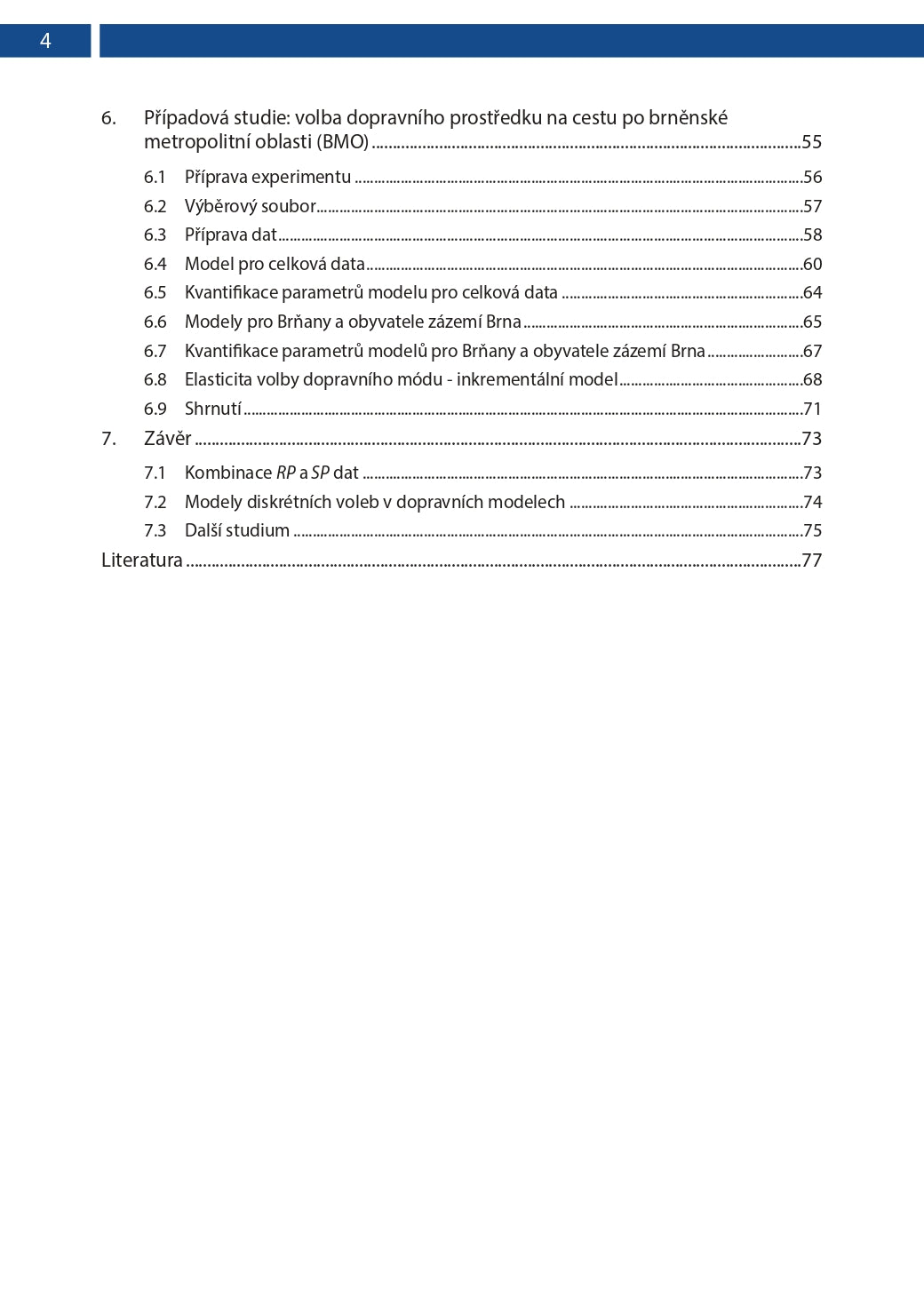
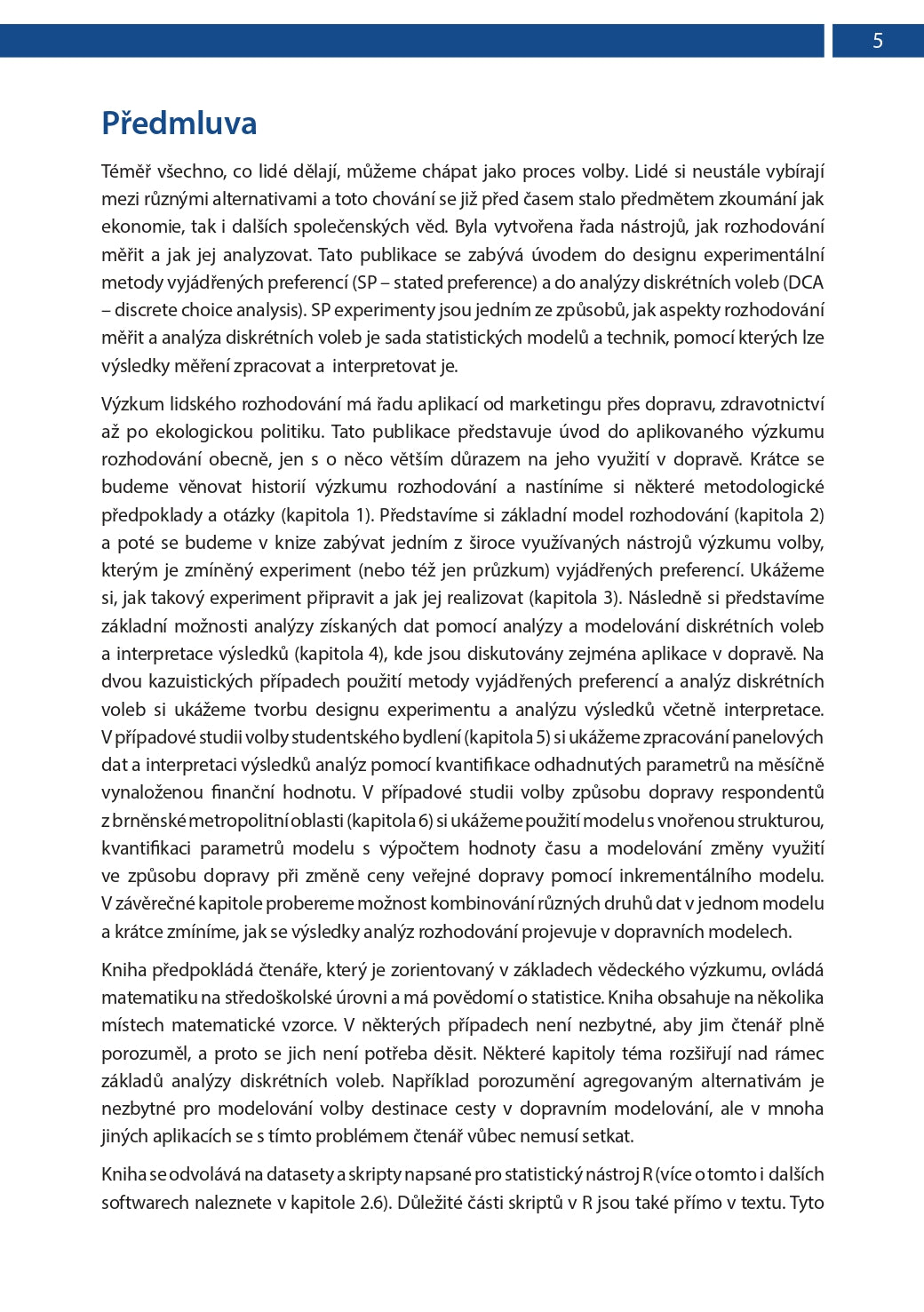
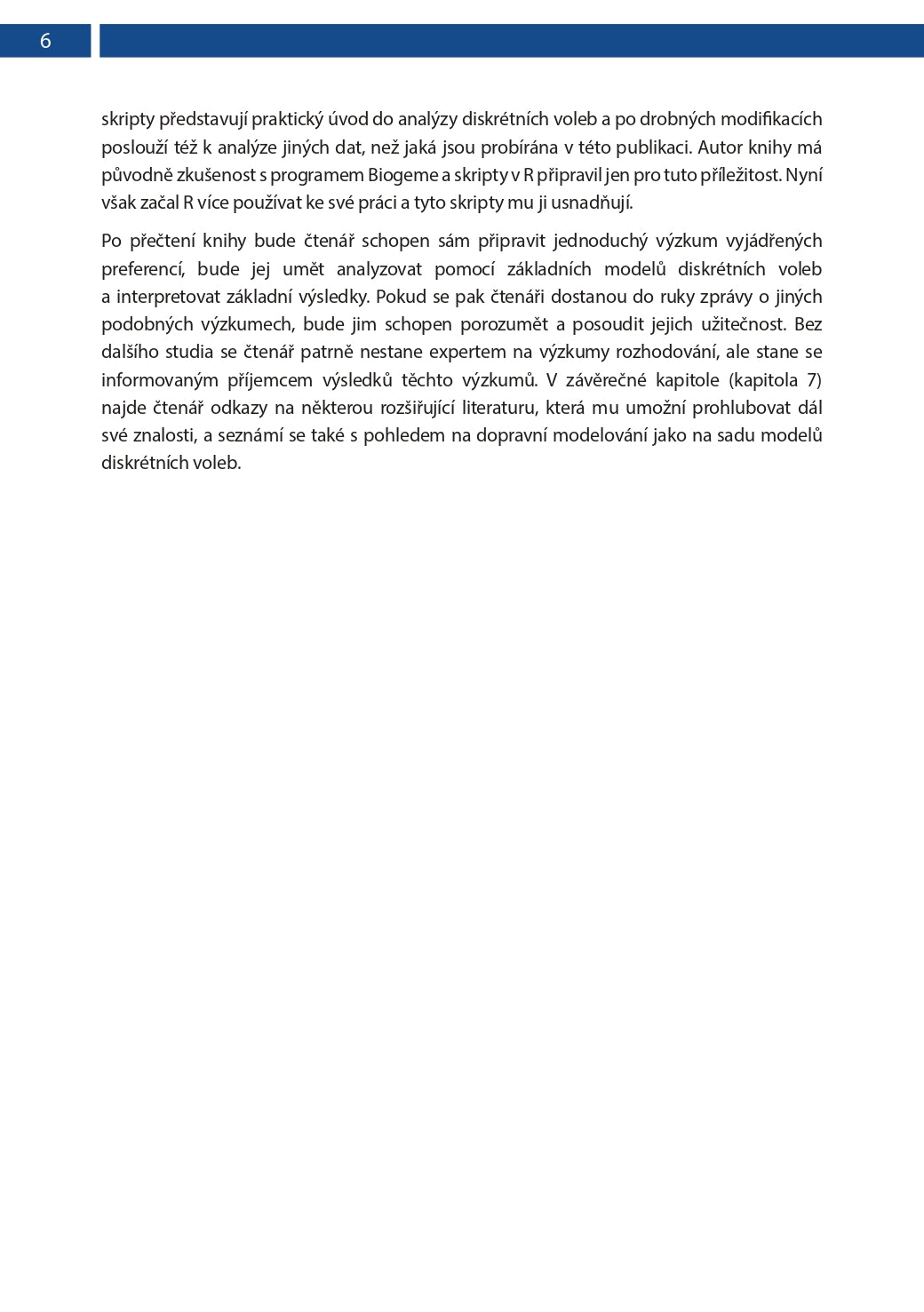
Detail
Author
- Simeček M.
Content
1. Introduction
2. Decision-making models
2.1 Basic decision-making model
2.2 The principle of independence of irrelevant alternatives
2.3 Models with a nested structure - nested logit
2.4 Model for aggregated alternatives
2.5 Mixed models
2.6 Discrete Choice Analysis Software
3. Creation of the experiment
3.1 Preparation of the scenario
3.2 Design of the experiment
3.3 Personalization of the experiment
3.4 Adaptive Testing
3.5 Selection of Respondents
3.6 Pilot study
4. Analysis of discrete choices
4.1 Parameter estimation and model quality assessment
4.2 Quantification of parameters
4.3 Elasticity
4.4 Interpretation of coefficients in mixed models
5. Case study: Choosing a student housing rental
5.1 Preparation of the experiment
5.2 Selection File
5.3 Preparation of data
5.4 Basic model
5.5 Mixed model
5.6 Quantification of parameters
5.7 Summary
6. Case study: choosing a means of transport for a trip around the Brno metropolitan area (BMO)
6.1 Preparation of the experiment
6.2 Selection File
6.3 Preparation of data
6.4 Model for total data
6.5 Quantification of model parameters for total data
6.6 Models for Brno residents and residents of the hinterland of Brno
6.7 Quantification of model parameters for the people of Brno and residents of the hinterland of Brno
6.8 Elasticity of choice of transport mode - incremental model
6.9 Summary
7. Conclusion
7.1 Combination of RP and SP data
7.2 Discrete choice models in transport models
7.3 Further study
Dedication
The methodology was created with the state support of the Ministry of Education, Youth and Sports within the framework of the National Sustainability Program I, project Transport Research and Development Center (LO1610).
Colophon
Year of publication
2019

